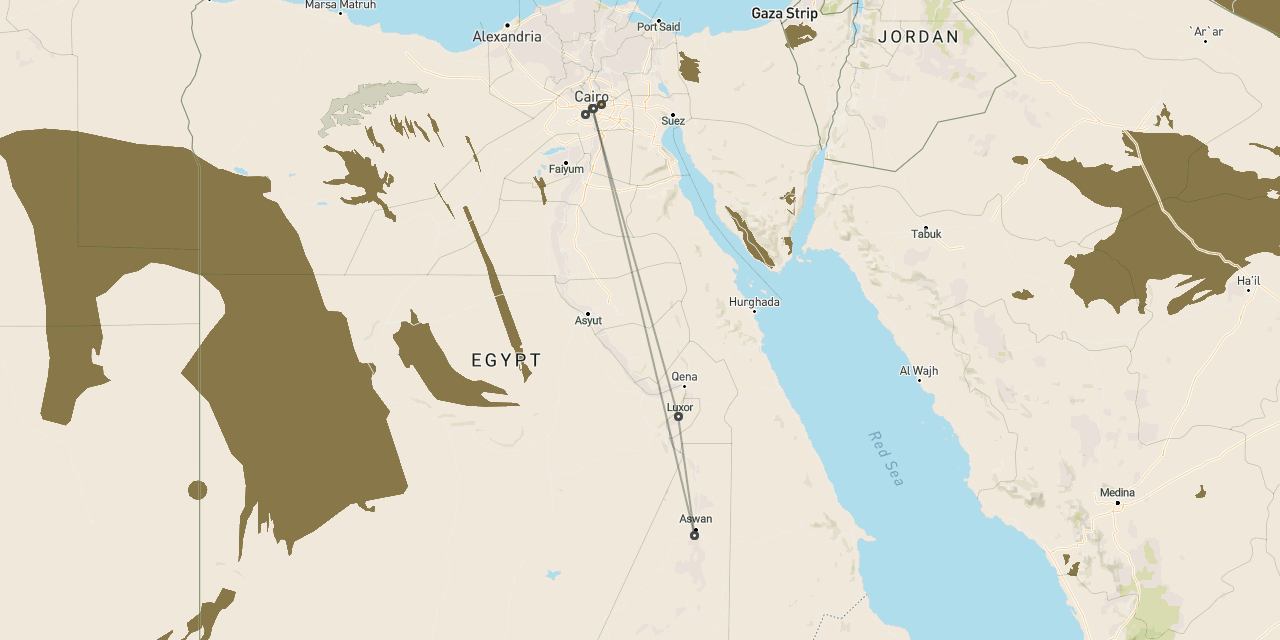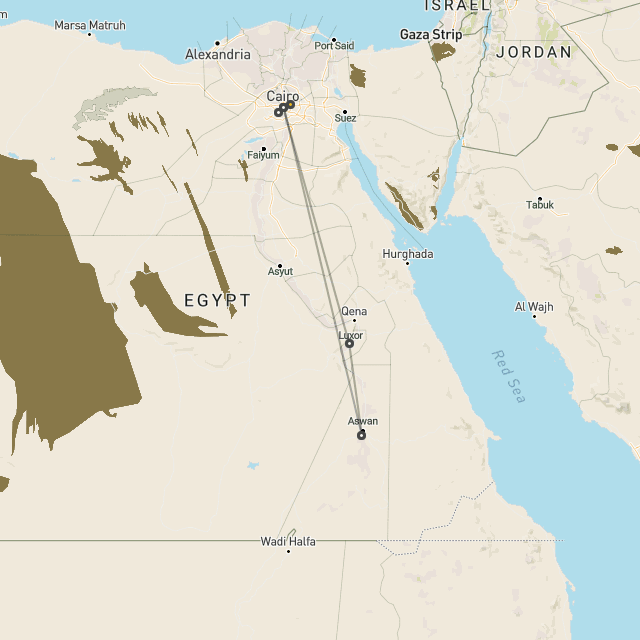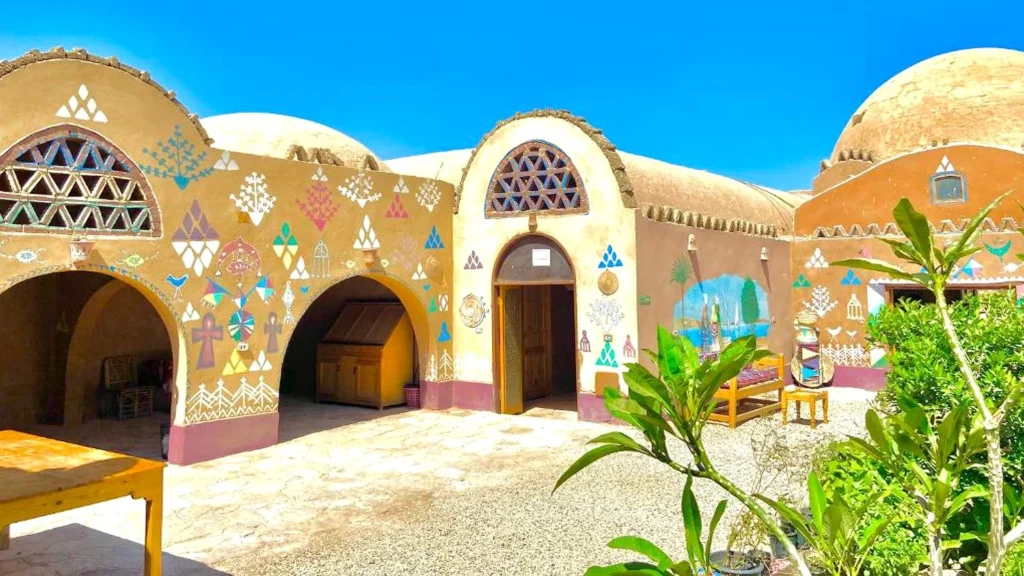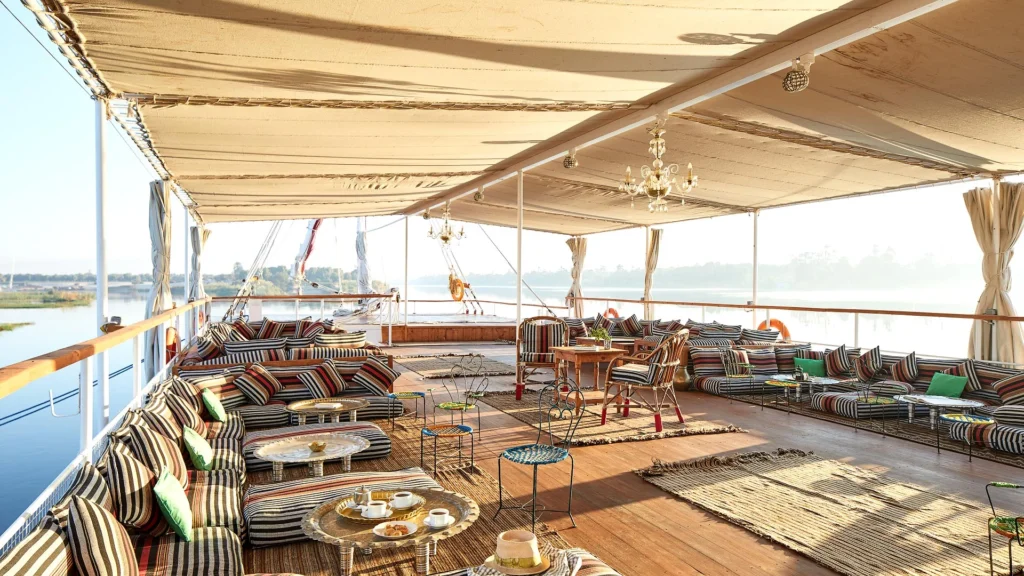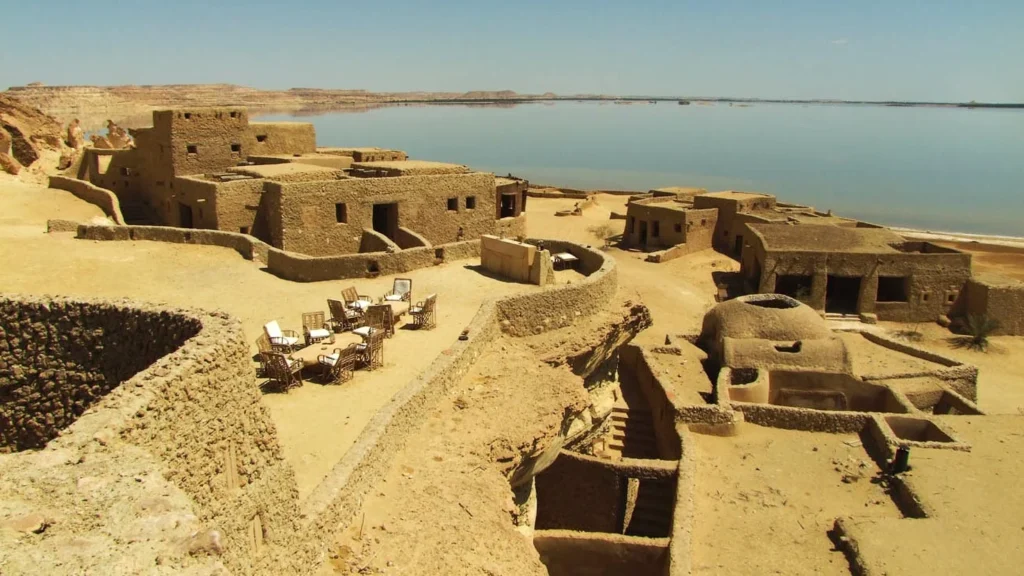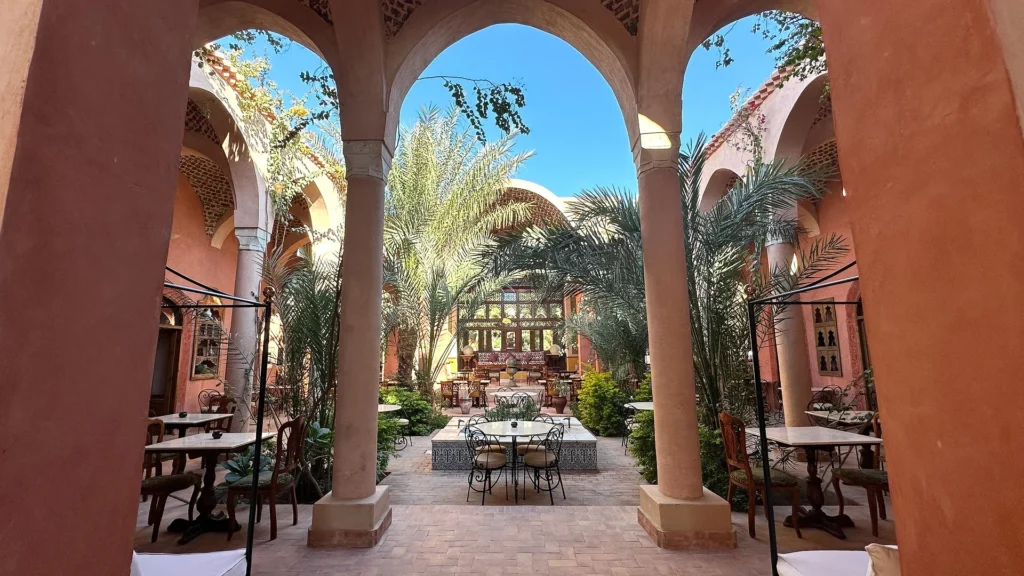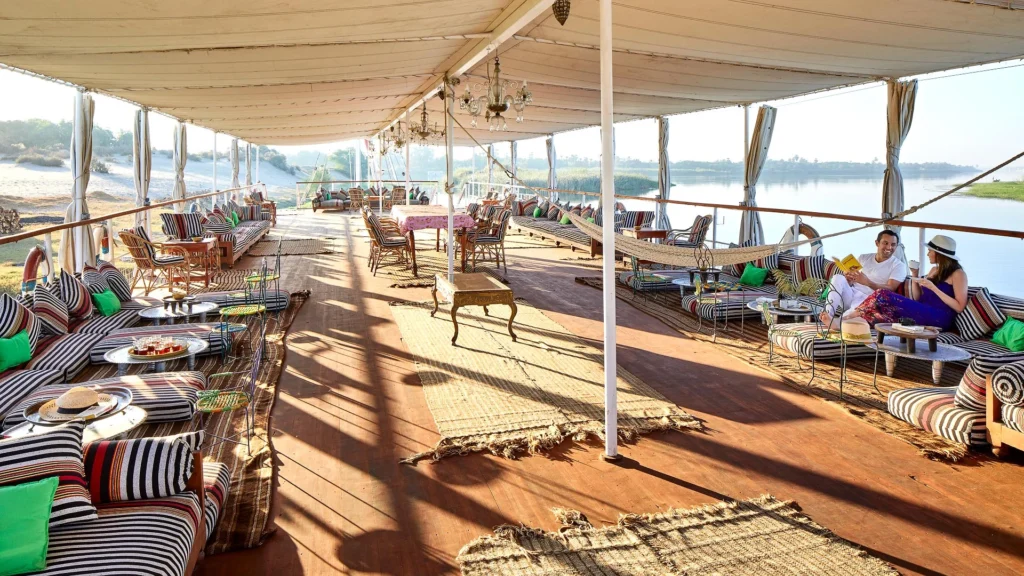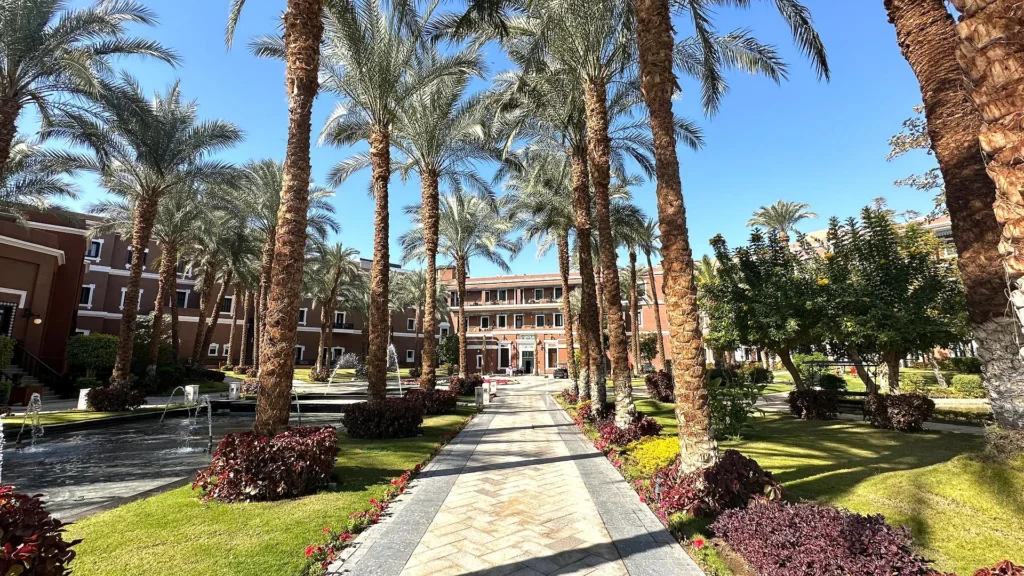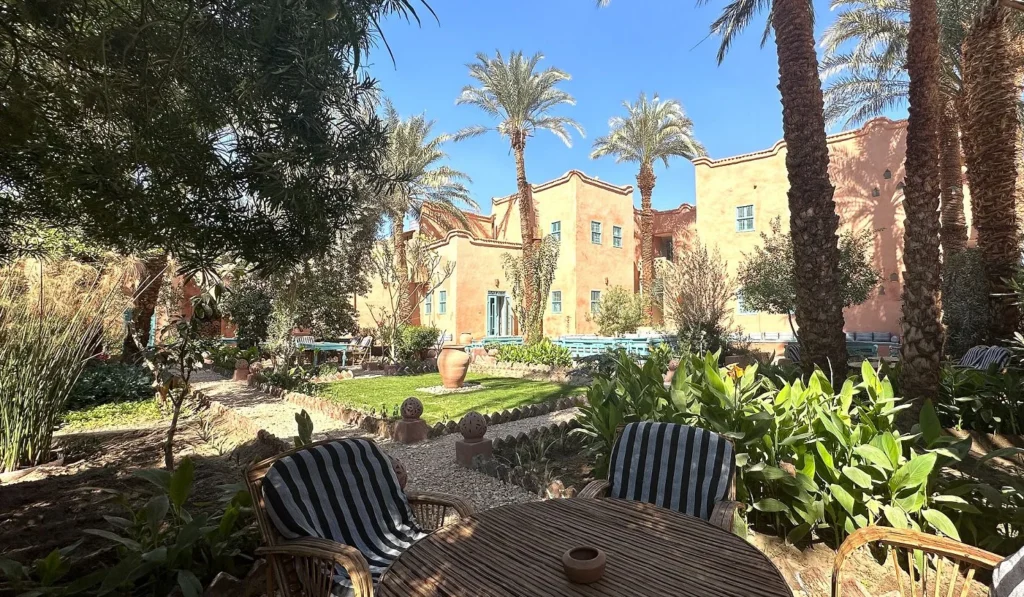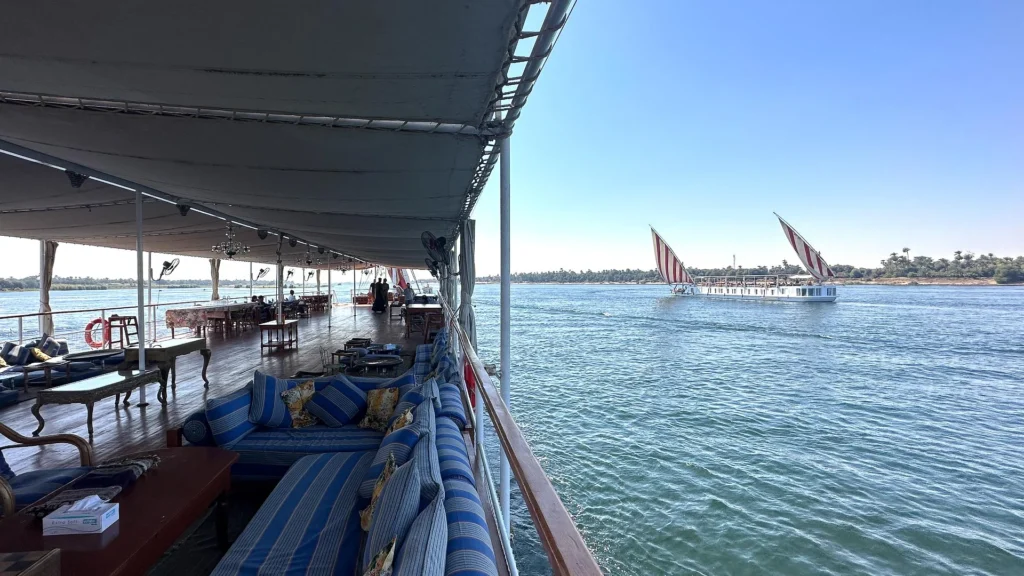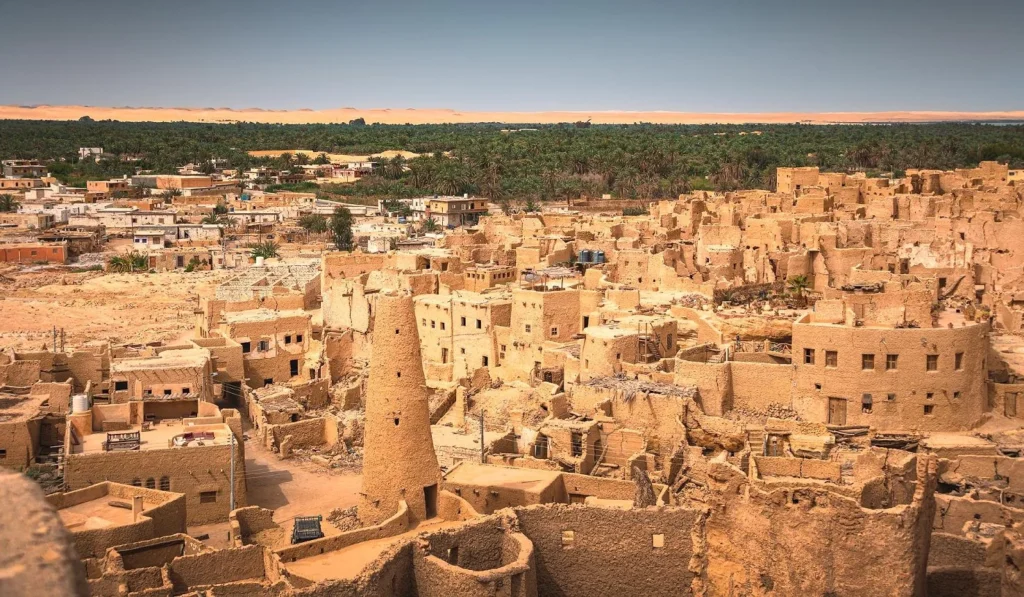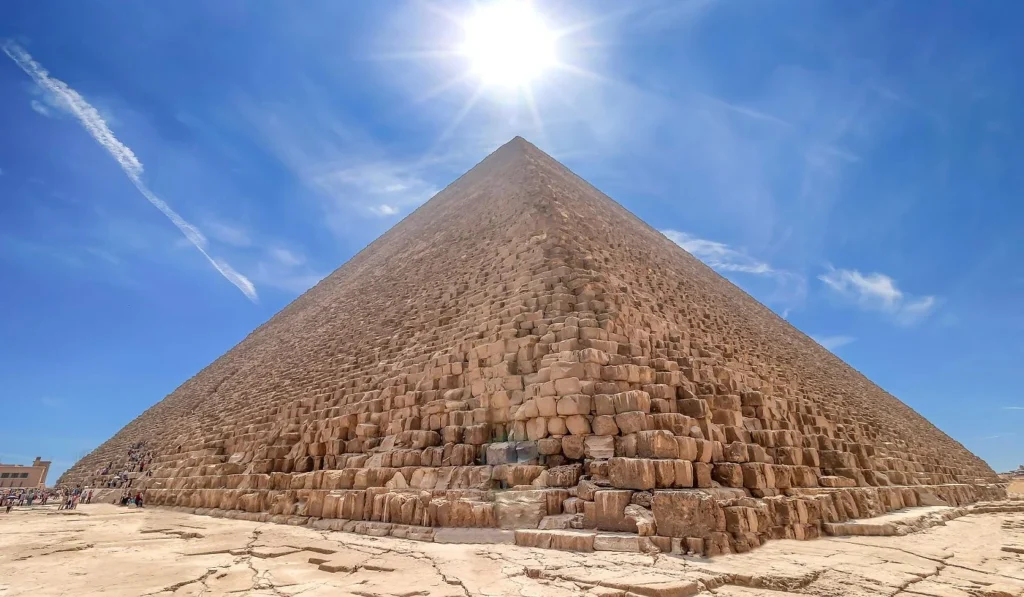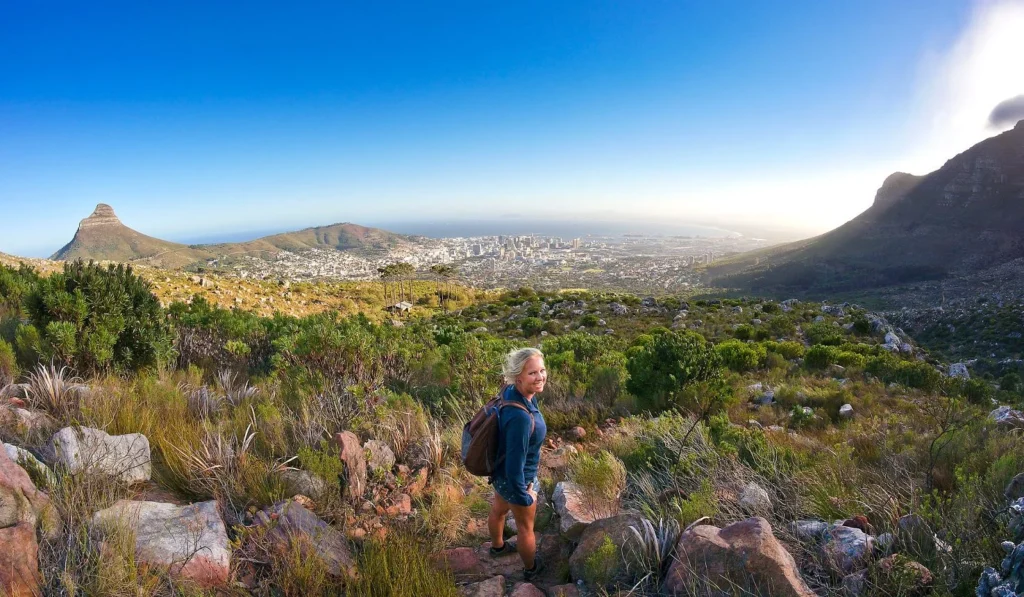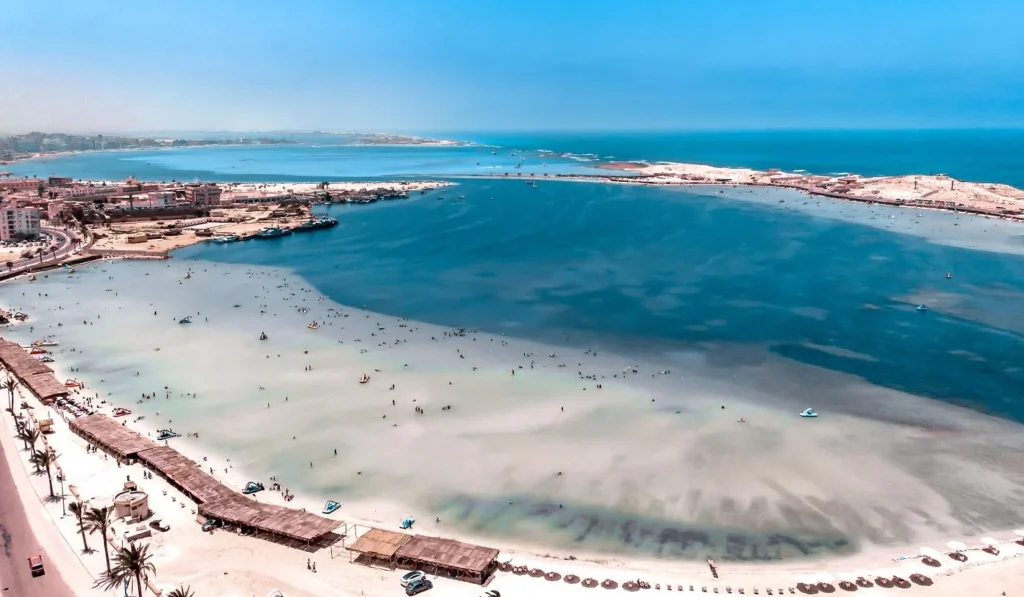
Travel to Abu Simbel
Abu Simbel
is a pair of impressive rock-cut temples
set in the remote deep south of Egypt
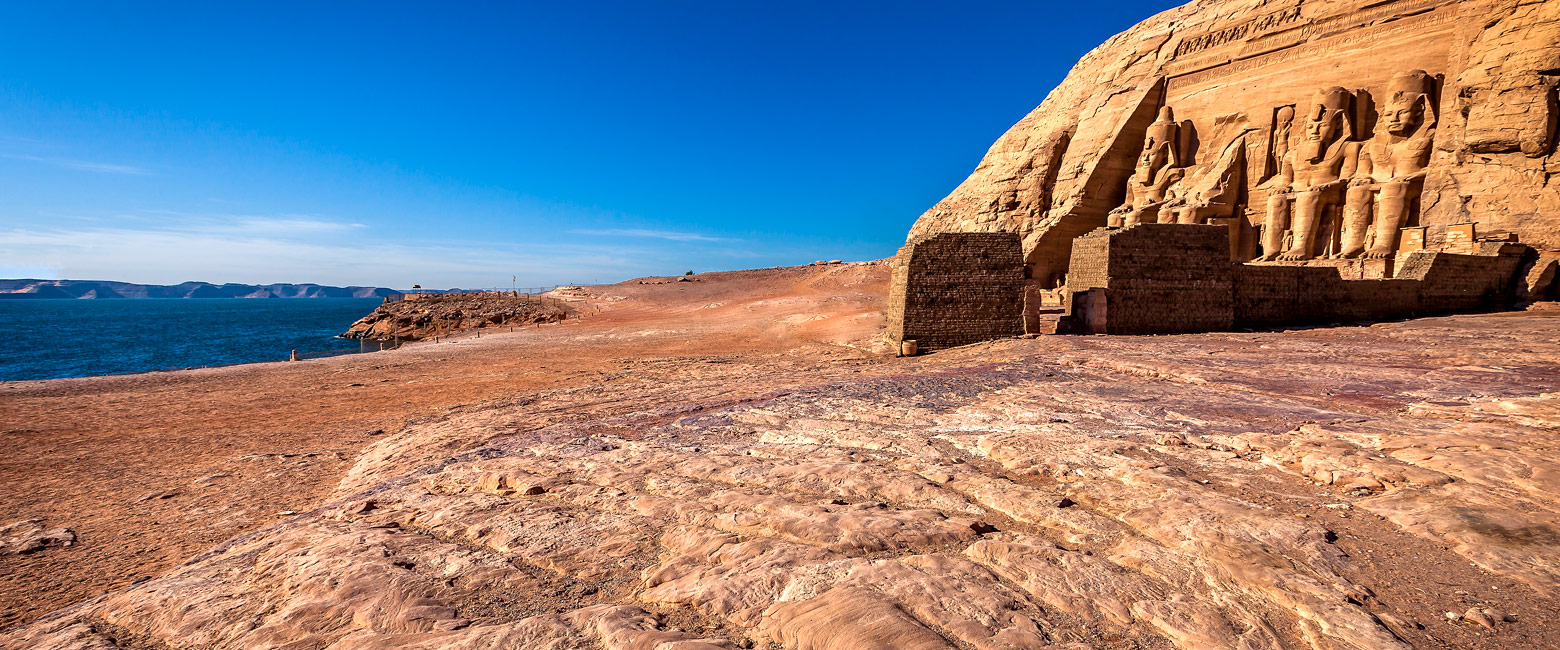
precisely aligned with the sunrise at the equinox
Set on the western shore of Lake Nasser, about 220 km (132 miles) south of Aswan and 75 km (48 miles) north of Wadi Halfa and the border with Sudan, Abu Simbel is a relatively small and nondescript town, clustered around a regional airport.
In ancient times, Abu Simbel was of great importance, being set alongside the Second Cataract of the River Nile. A sacred and strategically significant site, it was marked by two hugely impressive temples, constructed over 20 years during the reign of Ramesses II (1250 BC) and uniquely carved into a sandstone cliff.
During the 1960s, they were famously relocated to higher ground, to save them from the rising floodwaters caused by the Aswan High Dam. Whilst they remain hugely impressive, there is a sense of sadness about the artificial nature of the place.
The surrounding town, entirely dependent on tourism, also largely dates from the 1960s and onwards, adding little to the appeal of the place.
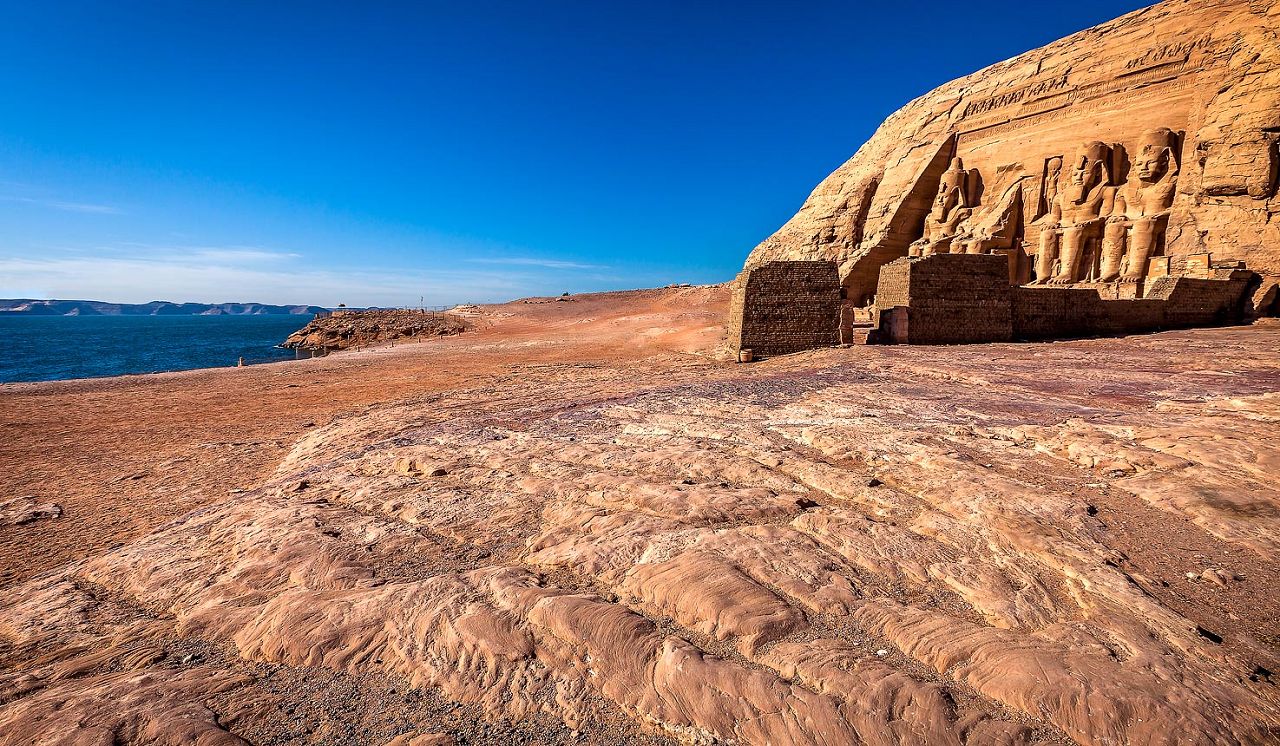
Gallery
Map
Abu Simbel experiences a conventional northern hemisphere climate, with a pleasantly warm dry winter Nov-Mar and an uncomfortably hot dry summer centred on May-Sep.
The best time to visit Abu Simbel is widely considered to be the winter months of Nov-Mar, but we sometimes favour other times of year, when temperatures may be higher but visitor numbers are often much lower.
During the Nov-Mar winter season the daytime temperatures typically reach a balmy 25C, with night-time temperatures plunging to a chilly 8C. These warm (rather than hot) conditions have led to winter being the most popular time to visit, meaning that visitor numbers reach their peak, especially around Dec-Jan. We therefore recommend November to mid-December and mid-January to March (excluding a week either side of Easter), although even then you probably need to deploy traffic avoidance measures when visiting the key sites.
The month of April represents a transition between winter and summer conditions and, in many ways, offers the best of both worlds, with visitor traffic also being relatively low (except for a week either side of Easter).
During the May-Sep summer season the daytime temperatures typically reach 41C, with night-time temperatures holding up around 23C. These conditions are generally considered to be too hot and visitor numbers are much reduced.
The month of October represents a transition between summer and winter conditions and, in many ways, offers the best of both worlds, with visitor traffic also being relatively low.
Getting there
Most people visit Abu Simbel as a day trip from Aswan, either by road or air, whilst travellers who want to spend more time here or who are continuing south into Sudan may choose to stay overnight here.
Abu Simbel is usually reached by road from Aswan, a journey of 3-4 hours, or by charter flight on the same route in about 45 minutes. There are usually two flights a day, timed so that visitors will have around two hours to spend at the temples.
The majority of travellers do this as a day trip, but it is possible to stay in the area and then (usually) fly out to Cairo.
It is also possible to journey by boat, usually visiting three other groups of temples along the way.
Travellers looking to combine Egypt with the Upper Nile in Sudan can make use of regular boat services running along the lake between Abu Simbel and Wadi Halfa.
probably justifies an additional night
let us know your thoughts about Egypt
and we will help you create the perfect trip
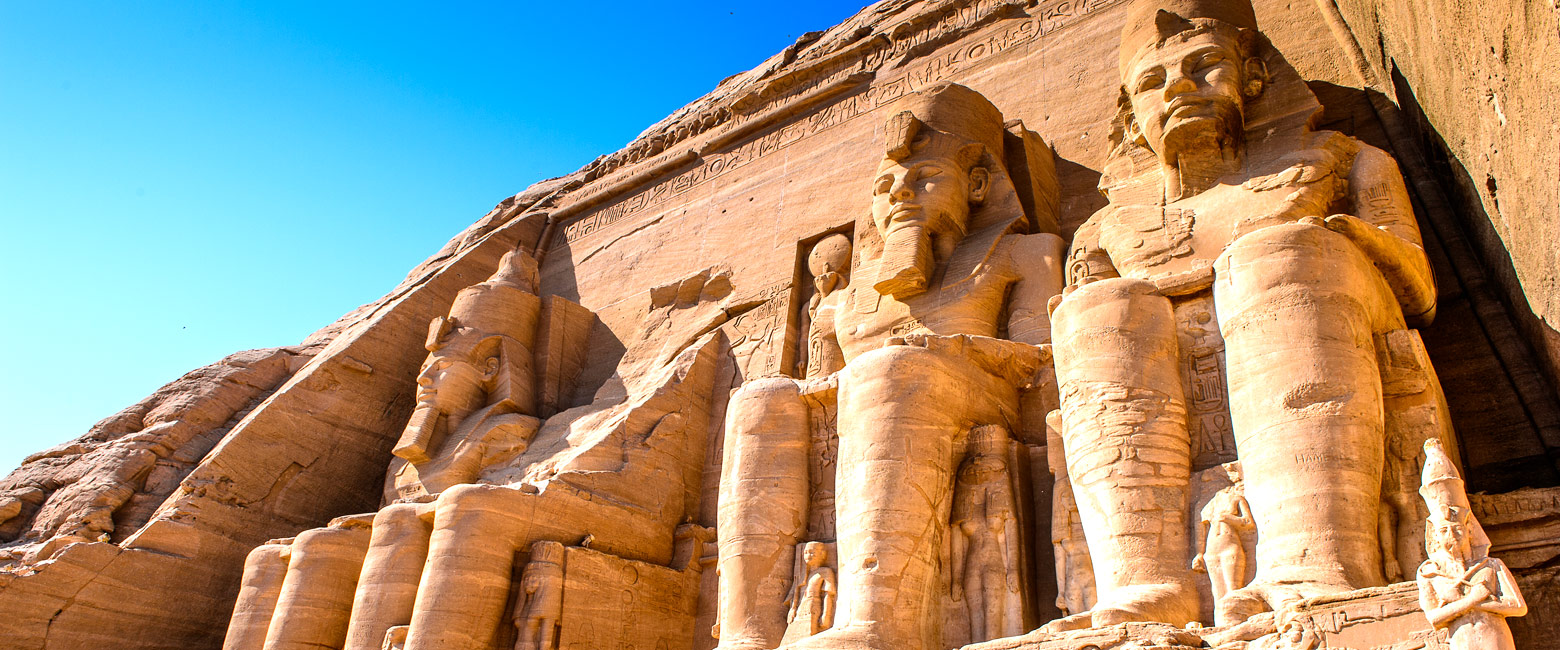
Extraordinary tailor-made adventures,
from earthy and edgy to easy and extravagant
From around USD 2500 per person, you set the ceiling
Sample Trips
Here are some of our popular trip shapes

Get started on your trip
It’s never too soon to get in touch, we are here to help with every stage of your planning.
Best Lodges
We regularly inspect and photograph all of the the best lodges, to ensure that we always recommend the most suitable options
Key Locations
Take a look around related locations. Click ‘View more’ to explore locations further afield.








